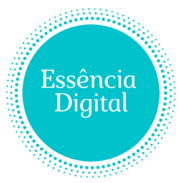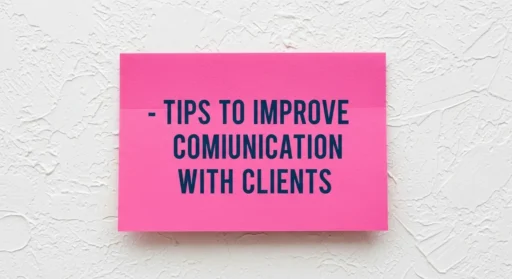In the competitive landscape of freelancing, your technical skills will get you noticed, but it’s your communication that will get you hired, retained, and recommended. Clear, honest, and professional communication is the bedrock of every thriving freelance career. It’s the invisible thread that weaves through every project milestone, from the initial discovery call to the final deliverable. Whether you are defining project scopes, delivering progress updates, navigating revisions, or resolving unexpected conflicts, your ability to communicate effectively dictates how clients perceive your reliability, expertise, and overall value.
Exceptional communication fosters trust, minimizes friction, and leads to smoother projects, resulting in less stress, more repeat business, and ultimately, higher earnings. Conversely, poor communication is a recipe for disaster. It breeds confusion, creates frustration, delays timelines, and leads to squandered opportunities. This comprehensive guide offers in-depth, real-world strategies to empower you to excel in every client interaction, transforming your communication from a simple necessity into your most powerful business asset.
Start with the Right Mindset
Before you type a single word in an email or join a video call, your approach needs to be properly calibrated. The mindset you bring to the conversation sets the tone for the entire relationship.
- Your client is a strategic partner, not just a boss or customer. Shift your perspective from being a task-executor to a collaborative expert. You are not just there to follow orders; you are there to provide solutions and guide your client toward the best possible outcome. This partnership mentality encourages mutual respect and shared ownership of the project’s success.
- Your goal is to build a positive, collaborative relationship. While completing the project is the immediate objective, the long-term goal is to build a relationship strong enough to lead to future work and referrals. Think of each interaction as a brick in the foundation of that long-term partnership.
- Communication isn’t about impressing; it’s about understanding and being understood. The aim is clarity, not complexity. Using overly technical jargon or convoluted language to sound smart often backfires, creating confusion and intimidating the client. True expertise lies in making the complex simple.
Approaching every conversation with a foundation of empathy, respect, and professionalism dramatically increases the likelihood of a win-win outcome where both you and your client feel valued and successful.
Master the Basics: Clarity, Tone, and Timing
Be Clear and Concise
Clarity is the golden rule of client communication. Your clients are busy people who appreciate information that is easy to digest and act upon.
- Avoid jargon and acronyms unless you are absolutely certain your client is familiar with them. If you must use a technical term, briefly explain it.
- Use short sentences and paragraphs. Break up large blocks of text to improve readability, especially in emails.
- Leverage bullet points and numbered lists to organize information, deliverables, and questions.
- Confirm understanding. End important emails or conversations by summarizing the key points and next steps. A simple, “Just to recap, my understanding is…” can prevent costly misunderstandings.
Set a Professional and Positive Tone
Your tone of voice in verbal communication and your choice of words in written communication create the emotional texture of your professional relationship.
- Be friendly but business-like. Especially in the early stages, maintain a professional boundary.
- Always be polite. Simple courtesies like “please,” “thank you,” and addressing clients by name go a long way.
- Avoid ambiguity, sarcasm, and negativity in writing. Without the benefit of body language and vocal inflection, a poorly worded joke can easily be misinterpreted as criticism. When in doubt, read your message aloud to hear how it sounds.
Respond Promptly
Timeliness demonstrates respect for your client’s time and shows that you are engaged and dependable.
- Establish and communicate your business hours. This sets a reasonable expectation for your availability.
- Aim to reply within 24 hours during your business week.
- If you need more time to provide a complete answer, send a brief acknowledgment. For example: “Hi [Client Name], thanks for your message. I’ve received it and will get back to you with a detailed response by tomorrow afternoon.” This simple act reduces client anxiety and lets them know they’ve been heard.
Set Clear Expectations from the Very Beginning
The most common source of freelance project failure is a misalignment of expectations. The project kickoff phase is your single best opportunity to prevent future problems.
- Define everything in detail: Clearly outline the specific deliverables, project milestones, and final deadlines.
- Clarify communication protocols: Agree on preferred communication channels (e.g., email for official records, Slack for quick questions), response times, and the frequency of progress reports (e.g., a summary email every Friday).
- Identify the decision-maker: Your day-to-day contact may not be the person with final approval authority. Ask early on, “Who will be the final decision-maker for this project?” to ensure you’re getting feedback from the right source.
- Put it all in writing. Your contract, statement of work, or project proposal should be the single source of truth. This document protects both you and the client from “scope creep” and “he said, she said” scenarios.
The Art of Proactive Updates
Never leave a client in the dark. Silence can be interpreted as a lack of progress or a hidden problem. Proactive communication builds immense trust.
- Establish a consistent reporting schedule. A weekly or bi-weekly update email can work wonders.
- Use a structured format for your updates:
- What I accomplished this week: List completed tasks.
- What I plan to do next week: Outline upcoming tasks.
- Blockers or challenges: Note any issues holding up progress.
- Questions for you: Consolidate your questions into one place.
- Over-communicate rather than under-communicate. A client who feels fully informed is a happy, low-stress client.
Handling Feedback and Revisions Gracefully
Receiving criticism of your work can be challenging, but feedback is an essential part of the creative and professional process.
- Detach your ego from your work. Feedback, even when delivered bluntly, is about the project, not a personal attack on your character or talent.
- Listen before you respond. Let the client finish their thoughts without interruption.
- Ask clarifying questions for vague feedback. If a client says, “I just don’t like it,” guide them toward specifics. Ask questions like, “Can you tell me more about what isn’t working for you?” or “Are there specific elements, like the color or the tone, that you’d like to see changed?”
- Summarize the requested revisions before you begin working on them to ensure you have understood correctly.
- Express gratitude. Thank your client for their input. Constructive feedback is a gift that helps you deliver a better final product and grow as a professional.
Navigating Difficult Conversations
Sooner or later, you will face a tough conversation about a missed deadline, a budget issue, or a change in scope.
- Address problems immediately. Don’t let issues fester. A small problem ignored can quickly become a major crisis.
- Approach with solutions, not excuses. Instead of just stating the problem, present a plan to solve it. For example, “We’ve encountered an unexpected issue that will delay the timeline by two days. To mitigate this, I propose we [your solution here].”
- Stay calm and factual. Keep emotion out of the conversation. Stick to the facts of the situation and what is outlined in your contract.
- Use “we” and “I” statements. Frame the issue collaboratively. “How can we solve this?” is much more constructive than “You didn’t provide the materials on time.”
Conclusion: Your Communication Is Your Brand
In the freelance world, your professional reputation is everything. Strong client communication is the most active and visible representation of your brand. It tells clients that you are reliable, professional, collaborative, and focused on their success.
By mastering these strategies—from setting the right mindset and clarifying expectations to handling feedback with grace and navigating challenges with confidence—you will do more than just complete projects. You will build a loyal client base, earn enthusiastic referrals, and distinguish yourself in a crowded marketplace. Your communication is not just part of the service you offer; it is the service. Make it exceptional.
“Good communication is also crucial when you need to handle difficult clients.”

